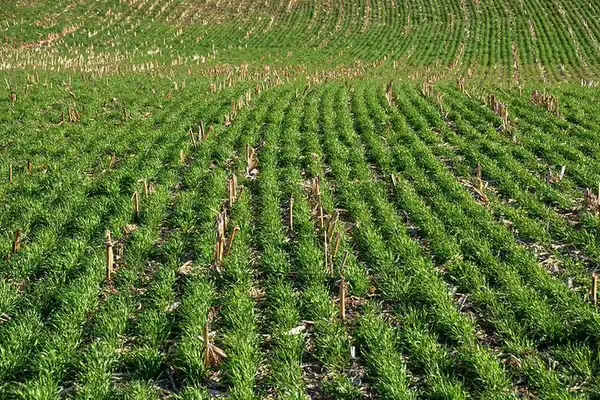
URBANA, Ill. – Cover crops, with their ability to reduce erosion and promote soil health, are being planted across more Midwestern land than ever. That’s according to new University of Illinois research showing cover crop adoption reached 7.2% in 2021, up from just 1.8% a decade prior. The finding is the result of sophisticated satellite-based remote sensing efforts that accurately detected cover crops across 140 million acres of cropland and tracked their expansion over 20 years.
“It's impossible to do field surveys for the whole Midwest. And so, remote sensing can provide a cost-effective approach for cover crop detection. We can monitor every field from the very beginning to the end of the year, giving us a clear idea of what happened over time,” says Qu Zhou, the study’s lead author and a doctoral student in the Department of Natural Resources and Environmental Sciences (NRES), part of the College of Agricultural, Consumer and Environmental Sciences at Illinois. Zhou is supervised by Kaiyu Guan, associate professor in NRES, founding director of the Agroecosystem Sustainability Center, and senior author on the study.
The uptick in cover crop adoption comes against a backdrop of increasing state and federal incentive programs, a statistically significant driver, according to the study.
In the new study, Guan’s team developed a novel algorithm to detect cover crops from space, integrating a detailed understanding of cover crop growth with machine learning and creating high-resolution maps for the entire Midwest region.
Read more from the College of ACES